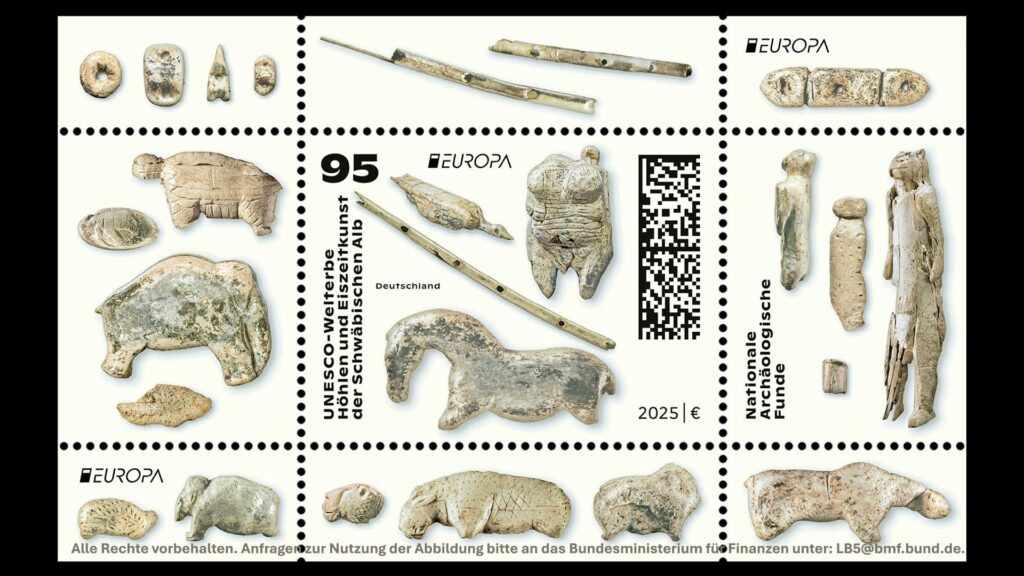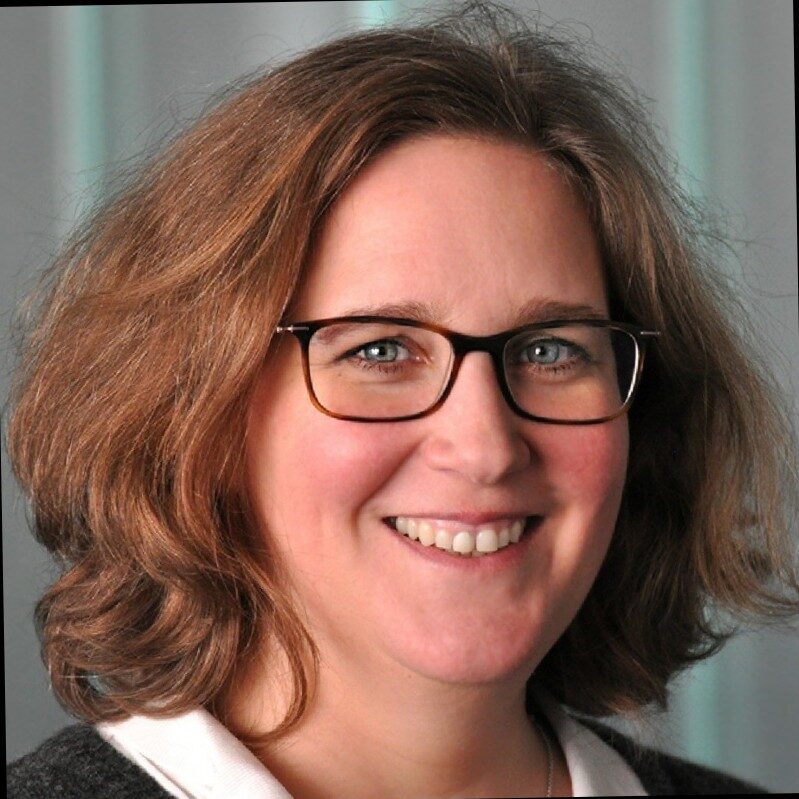Speaking of the digitization of objects, the German Europa stamp 2025 was issued on 8 May 2025.
Europa stamps have been issued since 1956 as a symbol of the European community, at that time by the post offices of the 6 founding members of the ECSC. A strong signal, so soon after the devastating war!
Since 1974, country-specific stamps have been issued under a common theme instead of a common stamp.
The theme of this year’s Europa stamp is National Archaeological Discoveries. The German stamp shows a series of figurative carvings made of mammoth ivory – some are around 40,000 years old!
The sites in Baden-Württemberg were declared a UNESCO World Heritage Site “Caves and Ice Age Art of the Swabian Jura” in 2017: https://www.iceageart.de/home
The finds from the caves, which have been systematically investigated since 1931, can now be found in various museums.

Motivs: © Archäologisches Landesmuseum Baden-Württemberg/ Fotos: Manuela Schreiner © Landesmuseum Württemberg Stuttgart/ Fotos: Hendrik Zwietasch © Landesamt für Denkmalpflege im Regierungspräsidium Stuttgart/ Yvonne Mühleis und Museum Ulm © Universität Tübingen
All rights reserved. Please contact LB5@bmf.bund.de
For example, the “ Wild Horse” in the lower part of the stamp is on display in the collection of the Museum of the University of Tübingen (MUT, collection of older prehistory, object no.: UFG-Äu-31_1-A):
https://www.emuseum.uni-tuebingen.de/de/objects/18622/wildpferd?ctx=d2cd19e2e7d35c535e244e88bc50d2bd67f83d23&idx=0
This small, barely 5 cm long horse was digitized as a 3D scan in 2018.
https://sketchfab.com/3d-models/ice-age-art-horse-c81bf8e6e2424b0783c8015f62e17bd8
Object digitization is not only attractive for researchers – after all, they can examine the 3D model from all sides at any time and from anywhere. Museum visitors can also see more details in the digitization than would be possible by simply looking at it in the display case.
Collection curators can be reassured that the delicate piece will not be touched unnecessarily or handled improperly.
(Did you know that WiNoDa offered a workshop on object digitization on 10 March 2025?)
Further information on the German Europa stamp can be found here: https://www.bundesfinanzministerium.de/Content/DE/Bilderstrecken/Sondermarken/Programm_2025/Mai-2025.html
All stamps of the series (including those from previous years) can be found here: https://europastamps.eu/

As an academic staff at the DAI, my main responsibility for WiNoDa lies in the creation of self-study courses on discipline-specific data literacy.
Hands-on and interactive – my goal is: less technical jargon, more “aha” moments.
Because we are all working with data!
